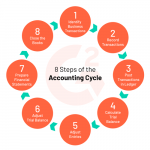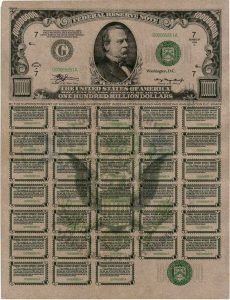
At the end of three years the truck’s book value will be $40,000 ($70,000 minus $30,000). Depreciation is how an asset’s book value is “used up” as it helps to generate revenue. In the case of the semi-trailer, such uses could be delivering goods to customers or transporting goods between warehouses and the manufacturing facility or retail outlets.
Quarterly Fixed Asset Mass Depreciation Run on June 29th, 2024

Under this method, the annual depreciation is determined by multiplying the depreciable cost by a schedule of fractions. For tax purposes, businesses are generally required to use the MACRS depreciation method. It’s an accelerated method for calculating depreciation because it allows larger depreciation write-offs in the early years of the asset’s useful life.
Using depreciation to plan for future business expenses
Your qualified business-use percentage is the part of the property’s total use that is qualified business use (defined earlier). For the inclusion amount rules for a leased passenger automobile, see Leasing a Car in chapter 4 of Pub. You also generally continue to use the longer recovery period and less accelerated depreciation method of the acquired property.
How much will you need each month during retirement?
This means that, for a 12-month tax year, 1½ months of depreciation is allowed for the quarter the property is placed in service or disposed of. The recovery periods for most property are generally longer under ADS than they are under GDS. The recovery period of property is the number of years over which you recover its cost or other basis. It is determined based on the depreciation system (GDS or ADS) used.
- To make the topic of Depreciation even easier to understand, we created a collection of premium materials called AccountingCoach PRO.
- This cost is $50,000 more than $2,890,000, so Jane must reduce the dollar limit to $1,110,000 ($1,160,000 − $50,000).
- You elect to deduct $1,135,000 for the machinery and the entire $25,000 for the saw, a total of $1,160,000.
- The corporation then multiplies $400 by 4/12 to get the short tax year depreciation of $133.
What if the useful life of an asset is short?
A business can expect a big impact on its profits if it doesn’t account for the depreciation of its assets. This is something you’ll probably come to realize when you try to re-sell the item—in most cases, you won’t get the same price you originally paid. If you run a business, you can claim the value of depreciation of an asset as a tax deduction. Here are the basics of depreciation and the best way to calculate this value for tax purposes.
Depreciation Is a Process of Cost Allocation
That boosts the income statement by $3,750 per year, all else being the same. It also keeps the asset portion of the balance sheet from declining as rapidly, because the book value remains higher. Both of these can make the company appear “better” with larger earnings and a stronger balance sheet. If you look at the long-term assets, such as property, plant, and equipment (PP&E), on a balance sheet, there are often two lines showing the cost value of those assets and how much depreciation has been charged against that value. Sometimes, these are combined into a single line such as “PP&E net of depreciation.”
Their unadjusted basis after the section 179 deduction was $15,000 ($39,000 – $24,000). They figured their MACRS depreciation deduction using the percentage tables. The depreciated cost of an asset can be determined by a depreciation schedule that a company applies to the asset. There are several allowable methods of depreciation, which will lead to different rates of depreciation, as well as different depreciation expenses for each period. Thus, the depreciated cost balance will also differ under different depreciation methods. Double declining balance depreciation is an accelerated depreciation method.
The machines cost a total of $10,000 and were placed in service in June 2023. One of the machines cost $8,200 and the rest cost a total of $1,800. This GAA is depreciated under the 200% declining balance method with a 5-year recovery period and a half-year convention. Make & Sell did not claim the section 179 deduction on the machines and the machines did not qualify for a special depreciation allowance. The depreciation allowance for 2023 is $2,000 [($10,000 × 40% (0.40)) ÷ 2]. As of January 1, 2024, the depreciation reserve account is $2,000.
For purposes of the business income limit, figure the partnership’s taxable income by adding together the net income and losses from all trades or businesses actively conducted by the partnership during the year. See the Instructions for Form 1065 for information on how to figure partnership net income (or loss). However, figure taxable income without regard to credits, tax-exempt income, the section 179 deduction, and guaranteed payments under section debit memo in accounting 707(c) of the Internal Revenue Code. If you place more than one property in service in a year, you can select the properties for which all or a part of the costs will be carried forward. For this purpose, treat section 179 costs allocated from a partnership or an S corporation as one item of section 179 property. If you do not make a selection, the total carryover will be allocated equally among the properties you elected to expense for the year.
Depreciation measures the decline in the value of a fixed asset over its usable life, allowing businesses to spread out the cost of that asset over several years. To claim depreciation, you must own the asset and use it for income-producing activity. Understanding depreciation helps you predict the value of your asset and claim the relevant tax deductions to reduce your total taxable income. Measuring depreciation is important as https://www.personal-accounting.org/ it allocates the cost of an asset over the periods that the company benefited from its use (matching revenues and expenses). We’ll explore different ways to calculate steady and accelerated depreciation so you can measure depreciation on different types of assets. We’ll also take a look at how depreciation relates to taxation and accounting, what assets you can claim for depreciation, and common causes of asset depreciation.

(Based on the half-year convention, you used only half a year of the recovery period in the first year.) You multiply the reduced adjusted basis ($800) by the result (22.22%). If you hold the property for the entire recovery period, your depreciation deduction for the year that includes the final month of the recovery period is the amount of your unrecovered basis in the property. You determine the straight line depreciation rate for any tax year by dividing the number 1 by the years https://www.business-accounting.net/t-accounts/ remaining in the recovery period at the beginning of that year. When figuring the number of years remaining, you must take into account the convention used in the year you placed the property in service. If the number of years remaining is less than 1, the depreciation rate for that tax year is 1.0 (100%). For the year of the adjustment and the remaining recovery period, you must figure the depreciation deduction yourself using the property’s adjusted basis at the end of the year.









